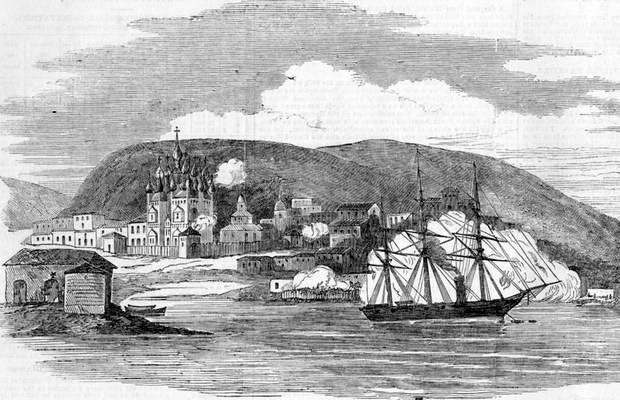The British flag in the capital of Russian Lapland will not be hoisted!

23 August 1854, the British tried to seize the ancient city of Kola, but were repulsed by the disabled team and local residents
The fighting of the Crimean War, despite the local name, had a large-scale character and unfolded in the Caucasus, on the Danube, on the Azov, Black, Baltic, White and Barents Seas, on Kamchatka and the Kuriles.
In the north, in the waters of the Barents and White Seas, the British took a number of measures to destroy Russian shipping and coastal fortifications. English ships raided the White Sea coast and intercepted Russian merchant ships. "Civilized" Royal Sailors fleet retrained as corsairs: robbed merchant ships and the local population, broke and burned Orthodox churches, peasant houses and outbuildings; the spoils that they could not carry with them were spoiled and broken.
In July 1854, the British bombarded Kandalaksha and the Solovetsky Monastery, ravaged the Holy Monastery on Kiy Island and the Pomeranian villages of Puslakhta, Keret and Kovda.
9 (21) August one of the members of the predatory expedition screw corvette "Miranda" under the command of captain Edmond Lyons embarked on a raid near the small port town of Cola. In Russian sources, the first mention of this city dates back to 1264.
During the Northern War, the Swedes tried to capture the Kola fortress, and during the Anglo-Russian war of 1807-1812, the British ravaged the city. They returned to Coke again after 45 years.
Captain Lyons, having sent his representatives to Kolya on the boat, demanded "an immediate and unconditional surrender of the fortifications, the garrison and the city of Cola with all the shells, tools and ammunition and all items belonging to the Russian government."
Lieutenant Brunner, adjutant of the Arkhangelsk Governor, who was at that moment in Kohl, refused. There was a 50 disabled team in the city and a local police unit under the command of the mayor Shishelev, who had experience in combat battles in the distant 1812 year.
Information